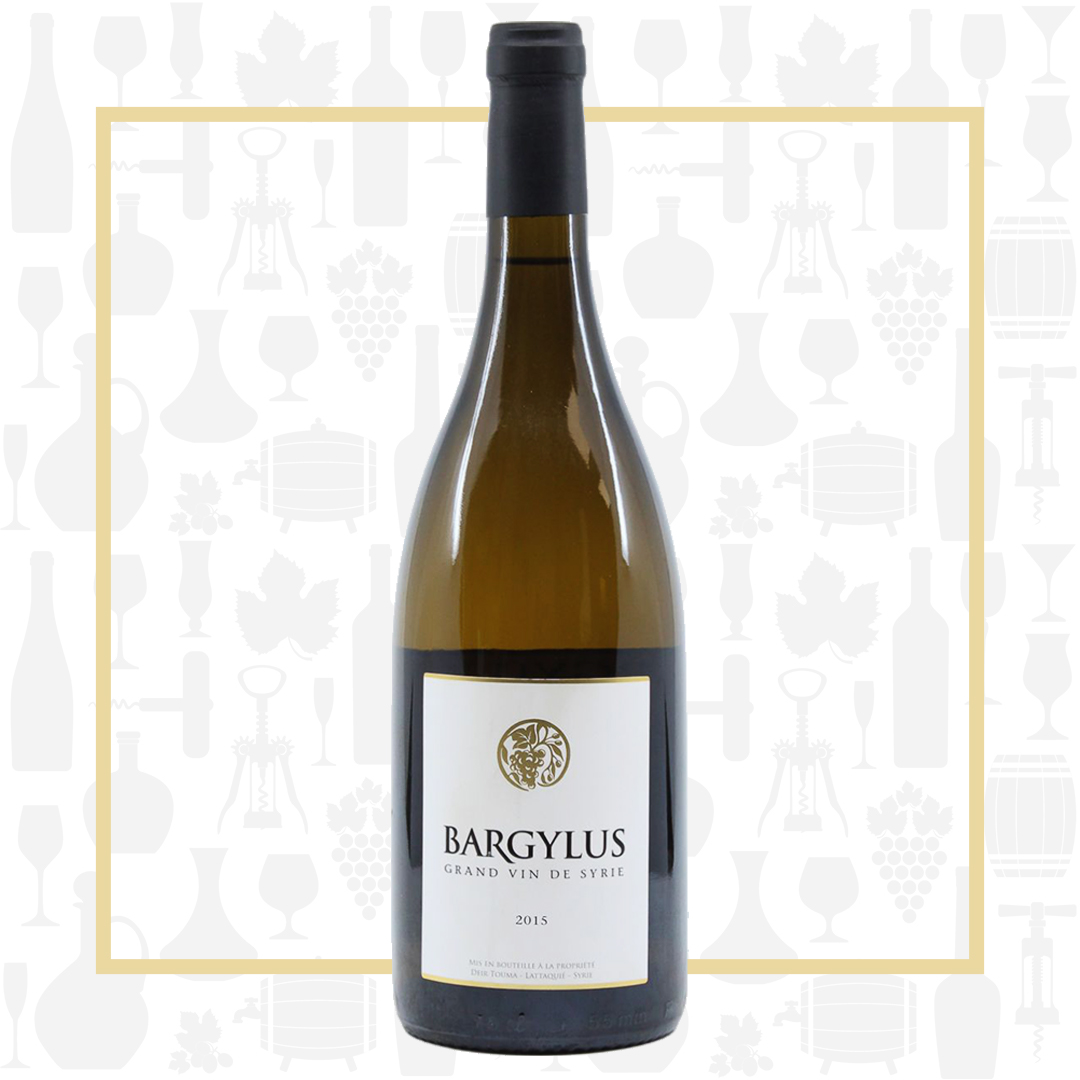Cellar Profile
Situated at 900 masl atop the Jabal al-Ansariyeh (its ancient name was Mt. Bargylus), outside the port city of Latakia, the vines of Domaine Bargylus are planted in a mix of limestone, flint and clay. The climate here is Mediterranean, with a large diurnal shift between daytime and nighttime temperatures. The vines are densely planted, but are low-yielding, netting only 1 kilo of grapes per vine. This is the only operating winery in Syria. These are arguably the most difficult wines to produce in the world; probably also the most dangerous. Since the outbreak of civil war in 2011, the vineyard has been targeted by Islamist rebels and the Syrian-Lebanese Saade brothers who run the estate have not been able to cross the border from Lebanon to visit. Winery equipment is difficult to source and spare parts have to be discreetly brought in by taxi. Samples of grapes and the finished wines have to make the perilous journey to Beirut, again by taxi via Syria’s northern border. The actual winemaking process is made over the Internet with the resident winemaker posting images of grapes and vines for the brothers to assess. Domaine Bargylus has been cited by wine critic Jancis Robinson as “arguably the finest wine of the Eastern Mediterranean”.
Region
Latakia is currently the only region in Syria that has an active operational winery. The internecine civil war has, unfortunately, curtailed any kind of investment in the region, despite its ability to grow extremely high quality grapes. Latakia sits on Syria’s coastal mountain range, in close proximity to the Mediterranean Sea, which provides cooling daytime breezes, essential during the heat of summer. The mountains are rich with deposits of limestone and flint, ideal for the cultivation of vitis vinifera, and the altitude (900 masl) ensures large diurnal shifts between the day and evening, cooling the grapes and slowing sugar production, to ensure full ripening of the skins and complexity of flavour in the finished wines.
Vineyard
Sitting atop the Jabal al-Ansariyeh mountain, Domaine Bargylus’ vineyard is maintained organically, with little to no intervention. The base of limestone underneath clay and deposits of flint are ideal for growing the Bordelaise grapes. Though the days during the growing season can be quite hot, the winds blowing off the sea cool the grapes, as do extremely cool evenings.
Winemaking
The organically-farmed grapes are hand-harvested and double-sorted, to ensure that any grapes that could give off-putting flavours are excluded from the crush. The two varietals are fermented separately, using indigenous yeasts. Only gravity flows are used to transfer between the fermentation tanks and the stainless steel tanks, where the wines rest on their lees for 3 months to gain mouth feel and complexity. The wines are racked off their lees, blended and bottled unfined and unfiltered, where they age for another 48 months before release.
Varieties
Chardonnay is the world’s most famous white-wine grape and also one of the most widely-planted. Climate plays a major role in dictating which fruit flavours these wines will have. Broadly speaking, warm regions such as California tend to give more tropical styles, while cooler regions, such as Burgundy give steely, flinty notes with minerality. Sauvignon Blanc originates from the Bordeaux region of France. Depending on the climate, the flavour can range from aggressively grassy to sweetly tropical. In cooler climates, the grape has a tendency to produce wines with noticeable acidity and green flavours of grass, green bell peppers and nettles, with some tropical fruit such as passion fruit and floral notes such as elder flower. In warmer climates, it can develop a more tropical fruit profile but risks losing its aromatics from overripeness, leaving only slight hints of grapefruit and peach.
Tasting Notes
The grassiness on the nose instantly evokes Sauvignon Blanc, but there is a candied orange and melon note as well. Despite having some fairly decent weight to it, the palate has plenty of vivacity, with a wonderful tingle of acidity and notes of apricot, quince and Macintosh apple. While dry, the wine certainly isn’t lean, and there is a hint of back end sweetness on the long, fruit-driven finish. Chill lightly and enjoy with seared scallops, fish stews or white asparagus with salt and olive oil.

